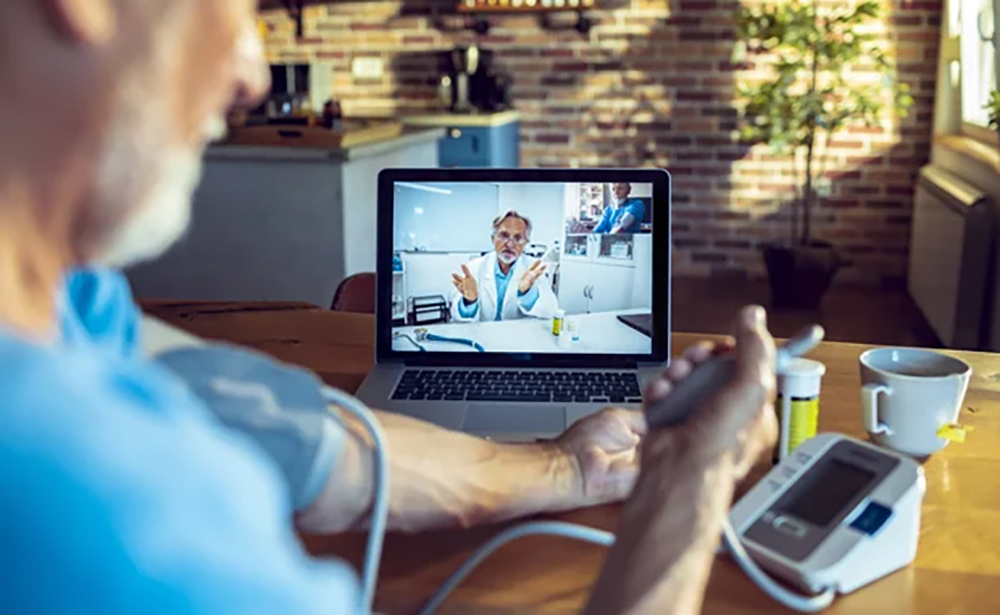Patient Remote Monitoring System After Discharge
Home » Patient Remote Monitoring System After Discharge
Patient Remote monitoring system after discharge
Implementing a patient remote monitoring system after discharge from the hospital is an effective way to extend care beyond the clinical setting, improve patient outcomes, and reduce the likelihood of readmissions. Here are key components and features of a patient remote monitoring system:
Remote Monitoring Devices:
Provide patients with wearable devices or home monitoring kits to track vital signs such as heart rate, blood pressure, oxygen saturation, and, if necessary, specific disease-related parameters. These devices should be user-friendly and easily connect to the monitoring system.

Mobile Applications or Patient Portals:
Develop mobile applications or web-based portals that allow patients to input data from remote monitoring devices, answer health-related questions, and access educational materials. Ensure the platform is secure, easy to navigate, and compatible with various devices.
Real-time Data Transmission:
Ensure seamless and real-time transmission of patient data from monitoring devices to the healthcare provider’s system. This enables timely intervention in case of abnormal readings or changes in the patient’s condition.
Automated Alerts and Notifications:
Implement an alert system that triggers notifications for healthcare providers when predefined thresholds are exceeded or when specific symptoms are reported by the patient. This facilitates early intervention and proactive care management.
Medication Adherence Tracking:
Include features to track and remind patients to take their medications. This can be integrated with the remote monitoring system to provide a comprehensive view of the patient’s adherence to the prescribed treatment plan.
Video Telehealth Services:
Integrate video telehealth capabilities for virtual follow-up appointments and consultations. This allows healthcare providers to visually assess the patient, discuss symptoms, and address any concerns without requiring an in-person visit.
Patient Education and Engagement:
Include educational resources, videos, and interactive content within the monitoring system to empower patients with information about their conditions, self-care, and lifestyle modifications. Engage patients through messaging and feedback loops.
Secure Communication Channels:
Ensure that the remote monitoring system provides secure communication channels for confidential and private conversations between patients and healthcare providers. This can include secure messaging or video conferencing features.
Integration with Electronic Health Records (EHR):
Integrate the remote monitoring system with the patient’s electronic health record to ensure continuity of care and a comprehensive view of the patient’s health history. This helps in making well-informed decisions based on a holistic understanding of the patient’s health.
Patient Risk Stratification:
Implement algorithms to stratify patients based on their risk levels. This allows healthcare providers to prioritize monitoring efforts and interventions for patients with higher risk profiles.
Data Analytics for Trend Analysis:
Use data analytics tools to analyze trends and patterns in patient data over time. This can provide valuable insights into disease progression, identify potential complications, and support evidence-based care decisions.
Patient Surveys and Feedback:
Incorporate patient surveys and feedback mechanisms to assess the patient experience with remote monitoring. This information can be used to continuously improve the system and address any challenges faced by patients.
Coordination with Home Health Services:
Facilitate coordination between the remote monitoring system and home health services. This ensures that the patient receives comprehensive care, including assistance with activities of daily living and additional support as needed.
Privacy and Data Security Measures:
Implement robust privacy and data security measures to protect patient information. Adhere to industry standards and regulations to ensure the confidentiality and integrity of health data.
Regular System Updates and Maintenance:
Schedule regular updates for the remote monitoring system to introduce new features, address security vulnerabilities, and improve overall system performance. Ongoing maintenance is essential to keep the technology current and effective.
Implementing a patient remote monitoring system after discharge promotes a patient-centric approach to healthcare, enhances care continuity, and empowers patients to actively participate in their health management. Regular evaluation, feedback loops, and collaboration with healthcare providers are crucial for optimizing the system and ensuring its effectiveness in improving patient outcomes.
Ready to Begin?
Start with our FREE Consultation!
Or call +880 1766-709223 or write us at info@qcconcern.org with any other questions.
